Our second stop in Crete was in the town of Rethymno. On Stavrianos Mpiris Str. 6, just a few metres from the angry wintry sea, stands the town’s Central Public Library. Since 2017, the Library has been housed in a new modern, spacious building.
The book that brought us here is the Library’s oldest printed item, another copy of Aristophanes’ Comedies printed in Venice by Aldus Manutius in 1498. This time, we were presented with a book in modern leather binding, with some evident loss of text: starting from leaf δii, this copy lacks the introductory details and the first pages of the comedy Ploutos (Wealth), while the rest is intact. A significant number of early handwritten notes by various unknown readers lead to the conclusion that the book was used as a textbook for learning Ancient Greek.
However, it was the provenance details of identified former owners that captured our interest even more, since they allow us to trace the journey of this copy from the mid-19th century to the present day. Being able to trace a book’s journey so accurately is unusual – and we were fascinated to discover that the history of this book closely follows the history of the Library itself.
The earliest known former owner was the Bishop of Rethymno Ioannikios, born Ioannis Lazaropoulos. According to the German traveler Franz W. Sieber, who visited the island in 1817, Ioannikios “had a library consisting of hundreds of the finest works”. We draw information on Ioannikios and his life from Greek scholar Stergios Manouras, with special mention to his books that ended up in Rethymno. Yiannis Papiomytoglou, who served as director of the Rethymno Public Library from the 1970s until 2010, identified and recorded 14 of Ioannikios’ books in the Library’s collection (the catalog, with references to the previous researchers, can be found here). Most of those bear a handwritten inscription stating that they were donated by Ioannikios to the Church of Rethymno. However, the only incunable, the Aristophanes copy in question, bears a different inscription:
Written in bold ink on the verso of the first flyleaf, it reads:
«Κων/πολις τῇ 18 Σεπτεμβρίου 1888 –Τῷ ἐν Ρεθύμνῃ Φιλεκπαιδευτικῷ Συλλόγῳ – Μ.Κ. Βολανάκης»*
Below it, another, nearly erased inscription can be traced:
«Μοί ἐδωρήθη παρά τοῦ Σεβασμιωτάτου Ἁγίου Ἰωαννίνων Κυρίου Κυρίου Ἰωαννικίου τοῦ πρός Μητρός θείου μου. Μ. Κ. Μπολανάκης».**
*Constantinople, September 18, 1888 – To the Educational Society in Rethymnon, – M. K. Volanakis.
**Gifted to me by the Most Reverend Bishop of Ioannina Ioannikios, my maternal uncle. M. K. Mpolanakis.
Thus, another former owner appears in the book’s history; he has been identified as Minos Mpolanakis, son of Constantinos (+1893). It is not known when the book came to his possession, but according to the inscription Mpolanakis donated it to the newly established Educational Society of Rethymnon (Φιλεκπαιδευτικός Σύλλογος Ρεθύμνης) in 1888. The Society “was founded in 1887 and completed a trajectory of over thirty years, with significant public benefit activities in the fields of education and culture in general”. Among those “it created a library quite remarkable for its time. It included some 1500 volumes, all of which came from donations from both the locals and the Greeks of Athens and the Diaspora” (see the study by Yannis Papiomytoglou and the Library website).
According to the Library’s website, after the dissolution of the Educational Society of Rethymno, at the end of the 1910s, the books remained in storage for decades. Those that survived the storage formed the core of the library of the Rethymnon Cultural Center (Πνευματική Εστία Ρεθύμνης). The Center was founded in 1945, with the preparation of the establishment of a public library among its main objectives.
 Indeed, the next provenance detail in our book is a stamp reading, though with difficulty, «Πνευματική Εστία Ρεθύμνης 1945» (Rethymnon Cultural Center 1945). The Center’s Library was enriched with donations from individuals and organizations, and was housed in the building of the old Girls’ School in the courtyard of St. Barbara’s church (where it remained until its recent move in 2017).
Indeed, the next provenance detail in our book is a stamp reading, though with difficulty, «Πνευματική Εστία Ρεθύμνης 1945» (Rethymnon Cultural Center 1945). The Center’s Library was enriched with donations from individuals and organizations, and was housed in the building of the old Girls’ School in the courtyard of St. Barbara’s church (where it remained until its recent move in 2017).
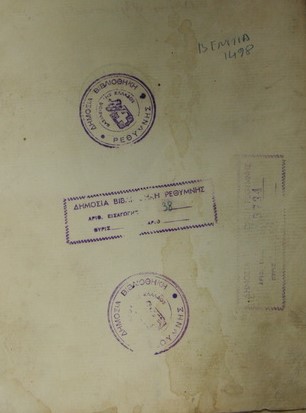
Since 1953, the Library has become public, under the jurisdiction of the Ministry of Education.
The most recent stamps in the book bear the inscription “Δημόσια Βιβλιοθήκη Ρεθύμνης” (Public Library of Rethymno).
One is round, with the indication “Kingdom of Greece”,*** and the other is rectangular, bearing the book’s entry number in the library inventory.
***Monarchy in Greece was abolished in 1973.
The last and most recent element of the copy’s history is its conservation and re-binding, carried out by external collaborator Ms. Konstantinou in the late 1990s. The book, in good condition after this effort, is incomplete; as previously mentioned, the title page, preface and the beginning of the comedy Ploutos are missing (33 pages in total). Since the ownership inscriptions are found on the blank leaf before the text, we can assume that this loss is older.
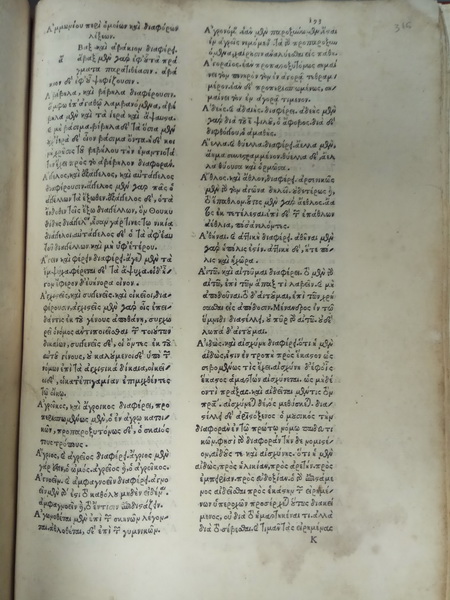
Still, our search does not end here! Because the work of Aristophanes has been bound together with a fragment from an hitherto unidentified book. The excerpt, with a total of 12 pages, contains most of the work Περί ομοίων και διαφόρων λέξεων (On the Differences of Synonymous Expressions), attributed to Ammonius the Grammarian. Although the first leaf contains the beginning of the work, the printed numbering of the leaves, which starts from 193, as well as the collation assure us that this comes from a much larger edition. The font most probably points to the printing house of Aldus Manutius: though not identical, the fragment bears striking similarities to the incunable edition of Johannes Crastonus’ Lexicon Graeco-latinum (Aldus Manutius, Romanus, Dec. 1497), which includes other, shorter works on language, including the aforementioned work of Ammonius. Our research for the identity of the specific edition continues!
We unfolded this fascinating parallel history of both the incunable and the Library during our visit at the welcoming new building, with the help and generous hospitality of the Deputy Head of the Library, Marianna Roukounaki, whom we warmly thank. Although no longer in the heart of the famous Old Town of Rethymno, the Library still remains, from its new location, in the core of the city’s intellectual and cultural life. This is evident by, among others, the impressive and colorful Children’s Section, the Library’s point of pride and center of educational programmes, as well as the fact that the Library is a principal reference point for the Treasure Hunt, a remarkably long-term creative activity that takes place every year just before Rethymno’s Carnival. A Museum is currently being prepared in the basement of the Library that will host information, objects, photos and videos about this beloved tradition of Rethymno.


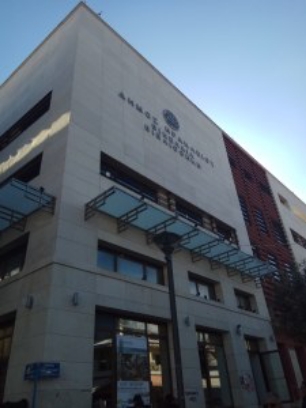
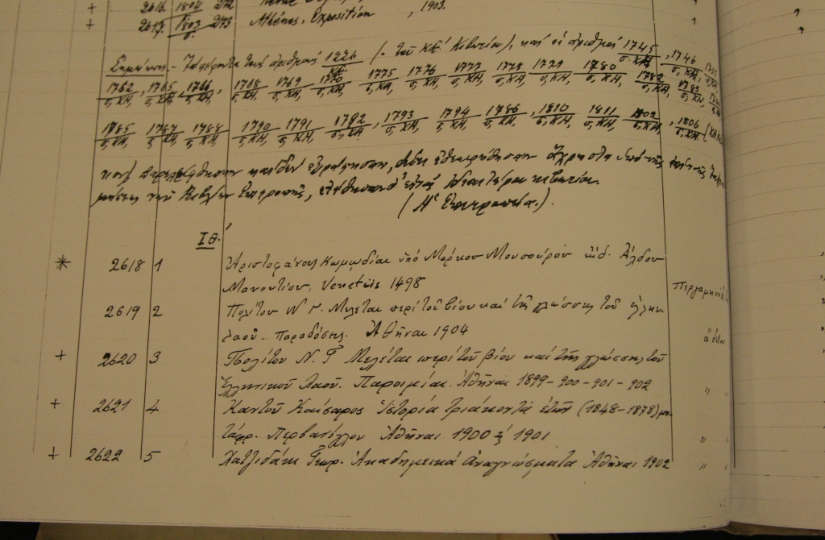
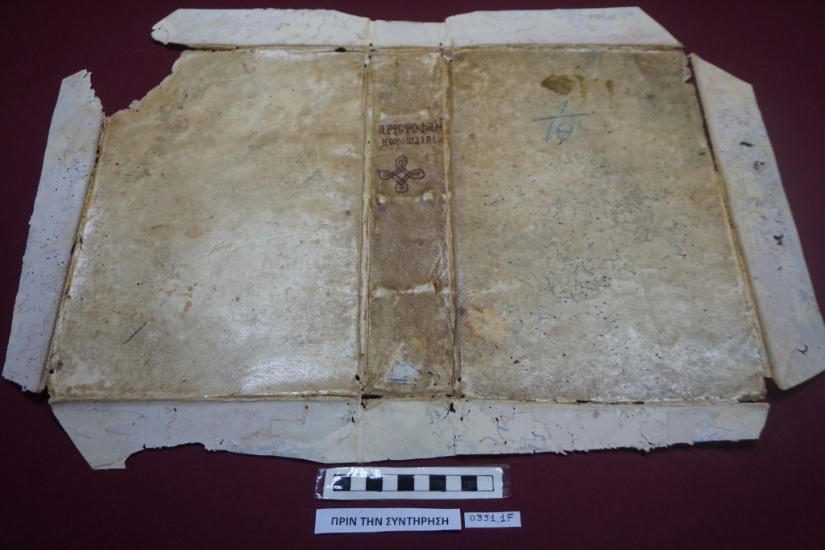
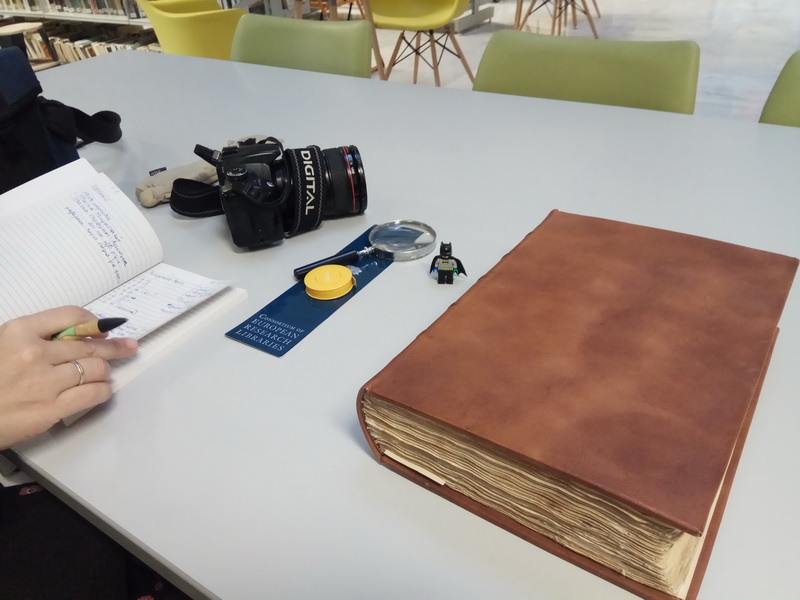


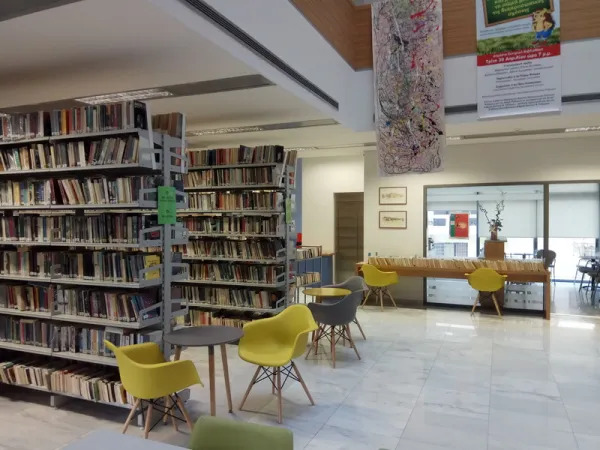
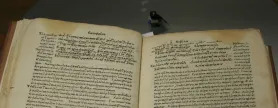
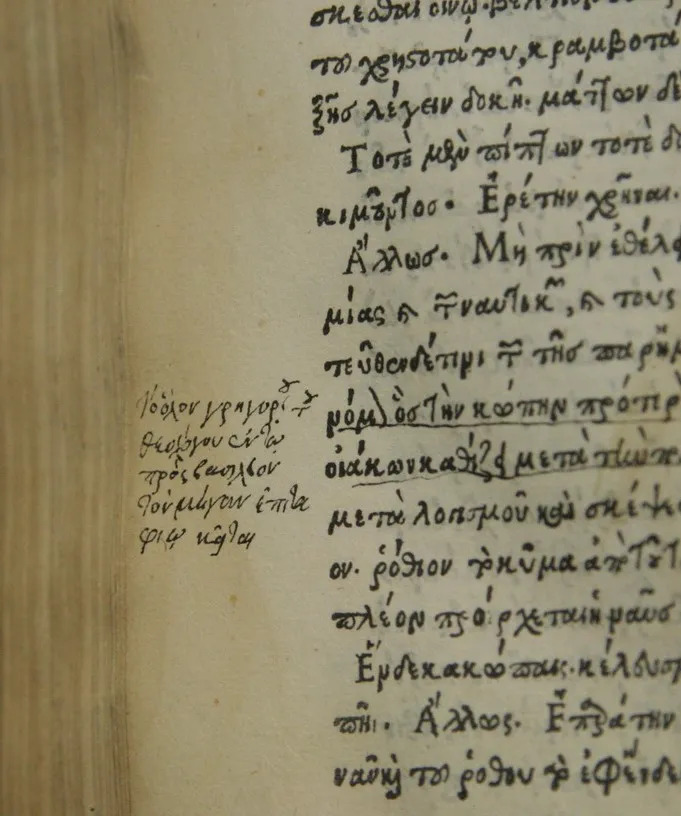
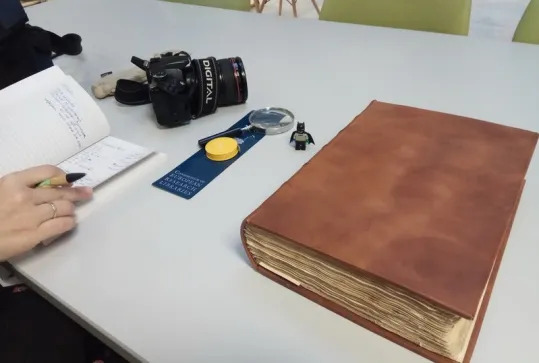
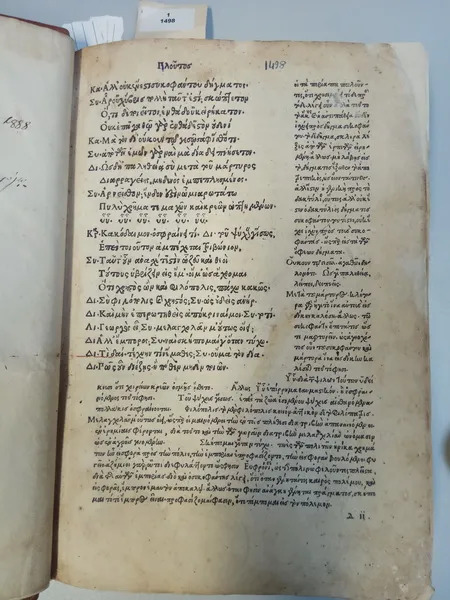
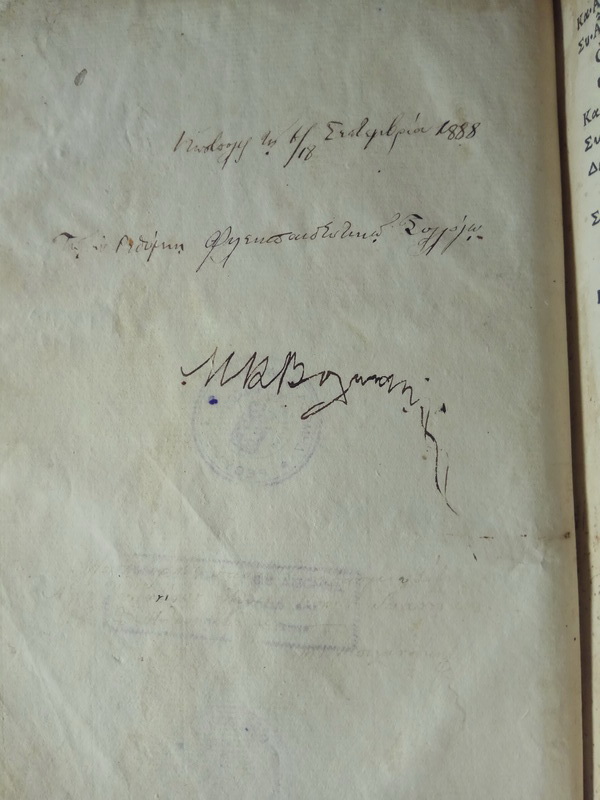
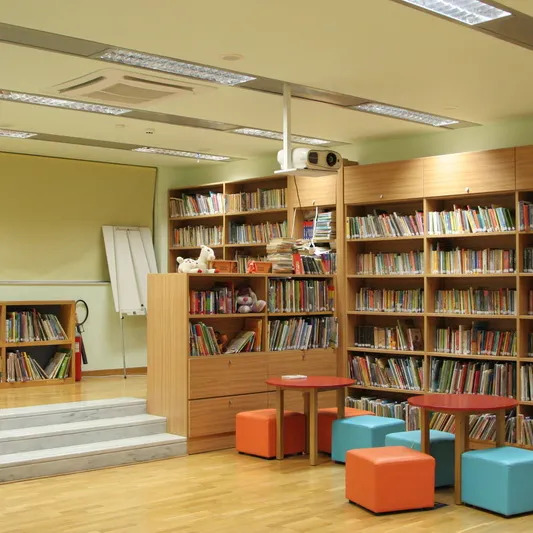
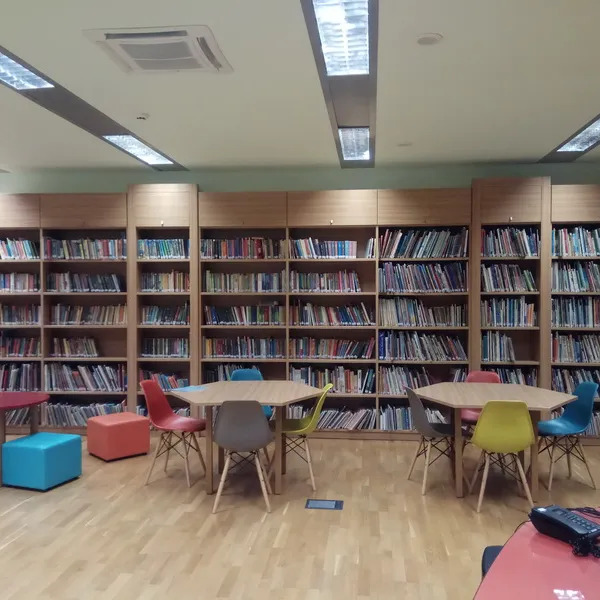
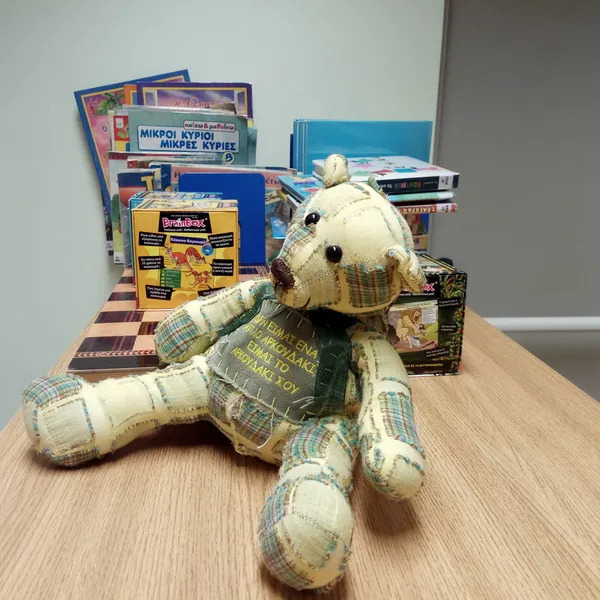

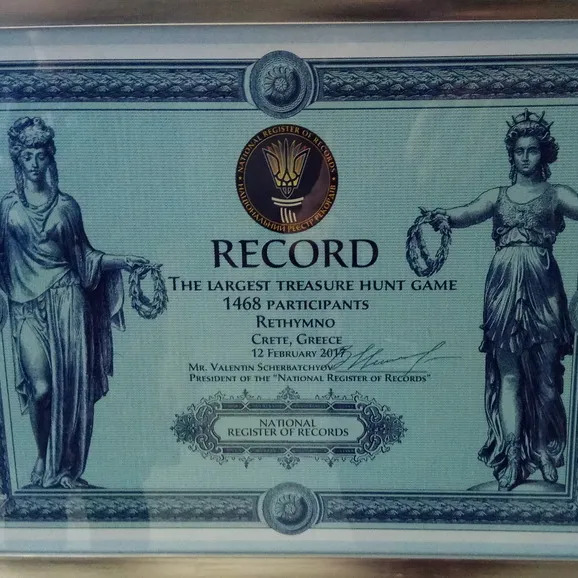


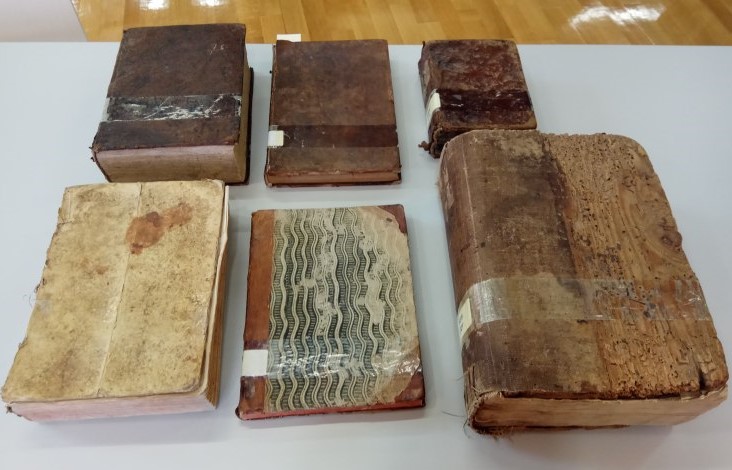




 info@laskaridisfoundation.org
info@laskaridisfoundation.org +30 216 900 3700
+30 216 900 3700  www.laskaridisfoundation.org
www.laskaridisfoundation.org


